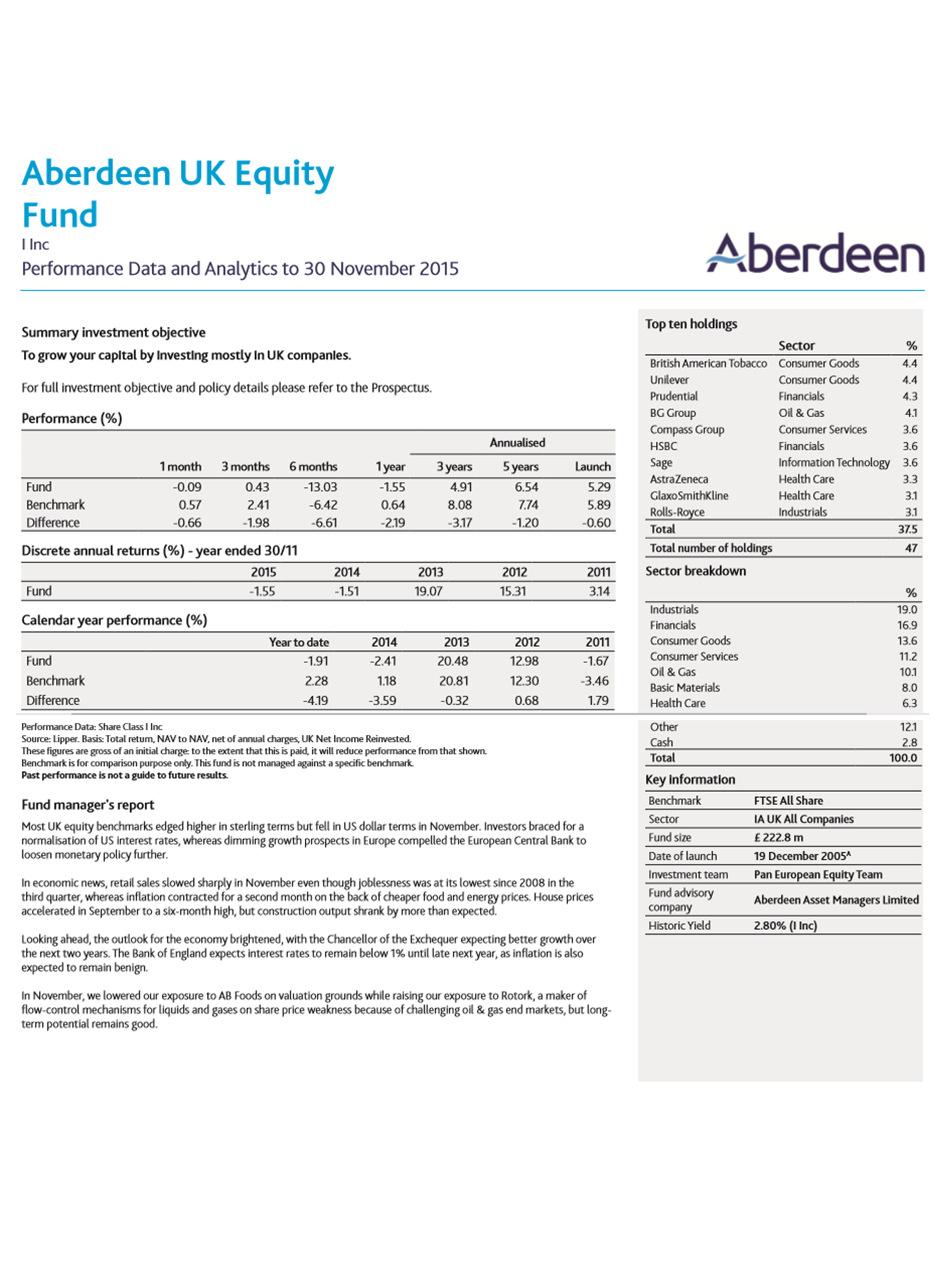Nov
2024
Investing Basics: Funds – the Facts
DIY Investor
4 November 2024
A fact sheet is a key document that allows investors to understand a fund’s objectives, major holdings, investment strategy, costs and historical performance; to some it may suggest the future potential of the fund – writes Christian Leeming
Fact sheets are available on issuers’ websites, they can be found on fund supermarkets and investment platforms and the DIY investor could do well to spend some time getting to grips with these important documents so that they are able to objectively research and compare and contrast funds they are considering.
The Key Investor Information Document (KIID) replaced the Simplified Prospectus as part of the EU UCITs IV directive in 2011 and was designed to be a simplified and engaging document to enable the retail investor to assess funds in a standardised format.
It is a requirement of the directive that KIIDs are updated as often as is required to maintain their accuracy and any material changes regarding investment strategy and charges has to be updated as soon as is reasonably practicable; it is therefore advisable to periodically review fact sheets for the products you hold.
The fact sheet (an example from Aberdeen Asset Management can be seen below) will include the name of the portfolio manager and a description of the fund’s objective – capital growth, income or a combination of the two; it will also show where the fund invests in terms of industry sector, asset types and geography.
‘a description of the fund’s objective – capital growth, income or a combination of the two’
Sometimes the fact sheet will include market commentary from the manager, including updates on influences and events in the fund’s space or key investments that the fund has made; DIY Investor includes a large number of articles and videos in which fund managers set out their stall.
The fact sheet will tell you the overall size of the fund – a large fund may have been swelled by new entrants attracted by its previous good performance.
A large fund may have in excess of a billion under management whereas a small fund could be less than £50 million although size will alter from sector to sector.
A key consideration for a would-be investor is whether the fund looks to deliver capital growth or income; this should indicate a fund that addresses your particular requirement and which of its share classes you may consider.
Funds that aim for capital growth tend to invest in companies that do not pay dividends, whereas funds that are looking to deliver income invest in more mature businesses that are a more reliable source of dividend income.
Previous distributions are shown on the fact sheet as ‘historical yield’ and solid past performance could indicate more of the same.
The fact sheet will usually show the top ten holdings in the fund
and the percentage of the overall fund they represent and therefore how much the success or otherwise of the funds depends upon them.
Holdings in the funds are broken down by geography, asset type and industry sector which aids comparison, particularly of global funds; it also declares the proportion of the fund that is held in cash – a large proportion may indicate a lack of certainty in the strategy of the fund or concerns about the sphere in which it operates.
A fact sheet will also show historical performance data, usually over one, three and five years and this is delivered as a ‘total return’ figure – the return you would have received assuming you reinvested any income back into the fund.
‘A large fund may have in excess of a billion under management ‘
The fund’s annual performance is also ranked with other unit trusts and OEICs in its particular sector by industry body the Investment Association (previously the IMA); historical data will show how this ranking has changed over time – whilst past performance may be no guarantee of future returns, it can be useful to know if the fund you are considering is on the wax or the wane.
In additional to its fact sheet, investment trusts issue regular, sometimes daily, updates as to the price of its shares in comparison to its net asset values (NAV) – the combined market value of its investments – which can allow a would be investor to identify trusts that are ‘cheap’.
Passive fund providers and platforms have selector tools that allow the would-be investor to search for exchange traded products to meet their individual requirements; justETF (www.justetf.co.uk) allows you to search for products by asset class, geography and strategy as well as its investment objective, total expense ratio and historical performance.
Many brokers publish lists of most traded funds to allow the investor to feel the mood of the market and justETF allows the investor to post portfolios and to emulate the investment strategies of those they choose to follow.
There are very many sources of information available to assist the DIY investor and a little time becoming familiar with the format of key documents and the type of data contained therein will start to allow the investor to make informed and objective investment decisions.
Financial Education » Investment trusts Commentary » Latest » Mutual funds Commentary » Mutual funds Latest » Uncategorized

Leave a Reply
You must be logged in to post a comment.